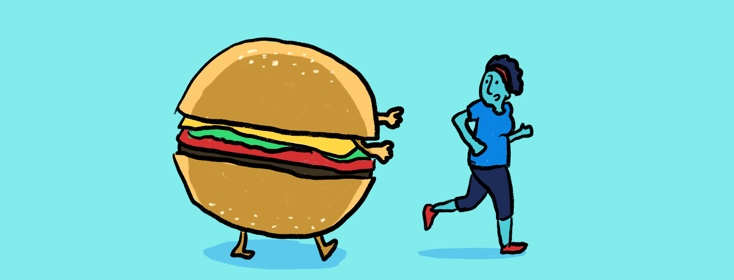What's So Terrible About Fast Food?
You have probably heard it said many times before. Fast food is not healthy food. Many restaurants have changed their menu to include more healthful options such as apple slices instead of french fries. But sadly, most of the most popular menu items (double cheeseburger, anyone?) still remain unchanged and unhealthy.
A recent study done in New York showed an increased prevalence of type 1 and type 2 diabetes where fast food and junk food were more available.1 Although they finally concluded that more research needed to be done to see the true effects on type 2 diabetes while also taking into account genetics and cultural influences, it does give us pause that just the availability of fast food could have such an effect on diabetes risk.
So what is so unhealthy about fast food? Can it be eaten in moderation with little to no bad effects? Let’s break it down.
Sodium
One of the biggest issues you will run into in the fast food world, and honestly, most restaurants, is the excessive use of sodium or salt. Salt is not only used as a flavor additive but it is also added to many packaged, frozen, or processed foods to increase their shelf life. So even if you do not add extra salt when your food is brought to you, most likely it is already loaded with almost 50 percent of the sodium you need for your entire day! Take the McDonald’s® Quarter Pounder with cheese. It has 1090 mg of sodium, which is 46 percent of your daily needs.2 And this doesn’t even include fries! Monitoring sodium intake is important to decrease risk of hypertension, heart disease and even stroke.
Saturated fat
Many items on the fast food menu are loaded with saturated fats. Of course burgers but also french fries, milkshakes, even breakfast sandwiches. Diets high in saturated fats can lead to high cholesterol levels, which are risk factors for stroke and heart disease. A McDonald’s ® sausage biscuit has 13 grams of saturated fat which is 66 percent of your daily saturated fat need and that’s just a breakfast sandwich! We all understand that sometimes the convenience of fast food is favorable but what is the cost? Taking the time to meal plan or pack an emergency meal or snack can be one of the best steps in working towards a healthy lifestyle.
Is it ok to have fast food occasionally?
As a dietitian, one of the biggest messages I want to send to people is that any food can be part of a healthy diet. If you have a favorite treat or indulgence, it’s better to keep it as part of your life than to remove it completely. Truthfully, if it’s your favorite, you will find a way to eat it. Feeling like we have to abstain forever can lead to binging instead of well-controlled choices. If fast food is something you feel that you cannot live without, find a healthy way to keep it in your diet. You could pick a day every other week to have it with your friends or family to make it more of a special event and really help you savor it. You could try choosing a chicken salad at every other visit to decrease your saturated fat intake and increase your vegetable intake! It’s all about finding a good balance that works for you while still keeping your body healthy.
This or That
Do you think that artificial intelligence (AI) will be more harmful or helpful for healthcare quality?

Join the conversation